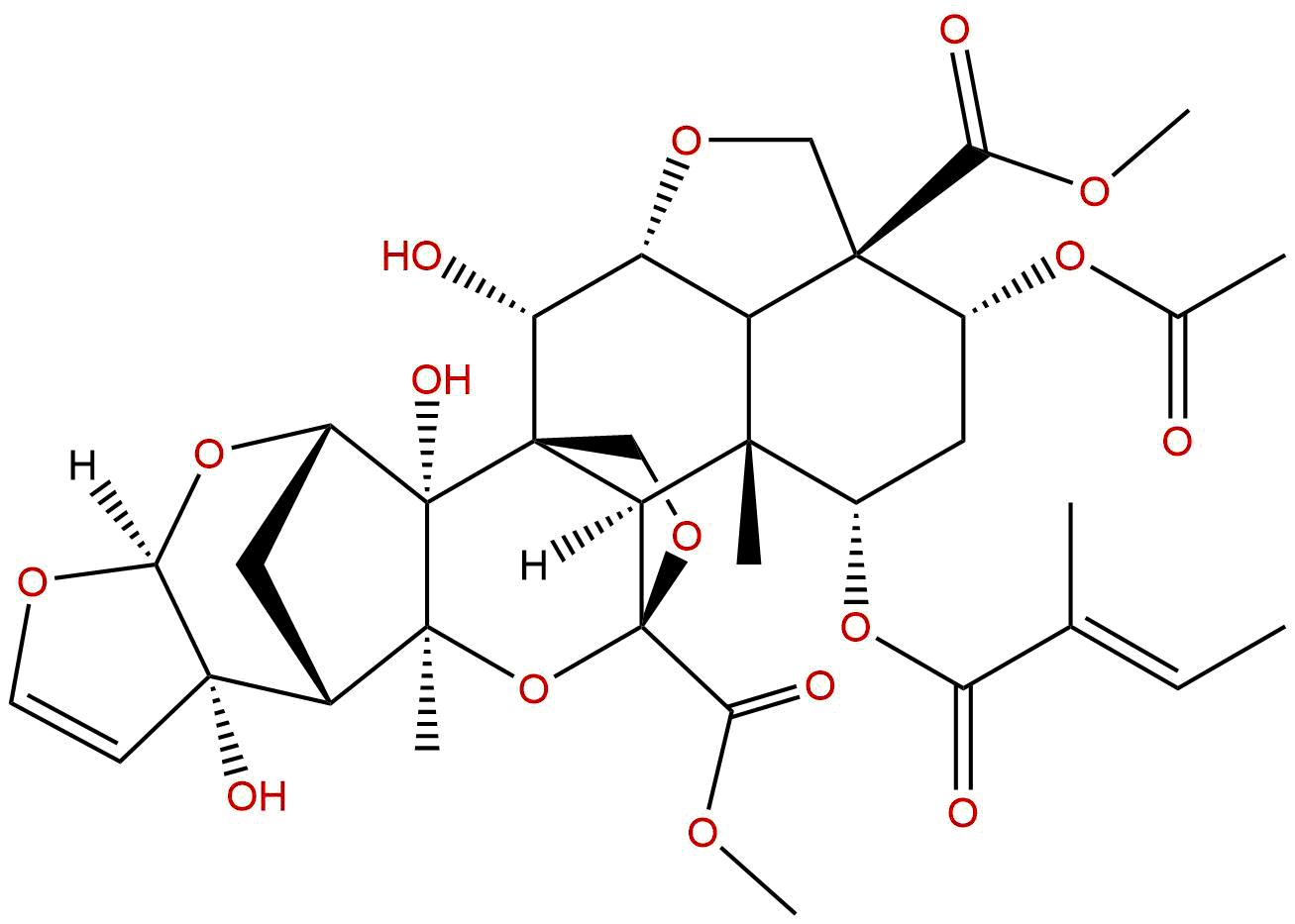
AzadirachtinCAS No.:11141-17-6
|
||||||||||
 |
|
|
||||||||

| Catalogue No.: | BP0224 |
| Formula: | C35H44O16 |
| Mol Weight: | 720.721 |
Product Name: Azadirachtin
Synonym name: Azadirachtin A
Catalogue No.: BP0224
Cas No.: 11141-17-6
Formula: C35H44O16
Mol Weight: 720.721
Botanical Source: Indian neem tree Azadirachta indica
Purity: 95%~99%
Analysis Method: HPLC-DAD or/and HPLC-ELSD
Identification Method: Mass, NMR
Packing: Brown vial or HDPE plastic bottle
Can be supplied from milligrams to grams.
For Reference Standard and R&D, Not for Human Use Directly.
Inquire for bulk scale.
Description:
Azadirachtin has antifungal activity, it used as insecticides.
References:
Annu Rev Entomol. 2019 Oct 8.
Botanical Insecticides in the Twenty-First Century-Fulfilling Their Promise?
METHODS AND RESULTS:
Academic interest in plant natural products with insecticidal properties has continued to grow in the past 20 years, while commercialization of new botanical insecticides and market expansion of existing botanicals has lagged considerably behind. Insecticides based on pyrethrum and neem (Azadirachtin) continue to be standard bearers in this class of pesticides, but globally, their increased presence is largely a consequence of introduction into new jurisdictions. Insecticides based on plant essential oils are just beginning to emerge as useful plant protectants. Some countries (such as Turkey, Uruguay, the United Arab Emirates, and Australia) have relaxed regulatory requirements for specific plant extracts and oils, while in North America and the European Union, stricter requirements have slowed progress toward commercialization of new products.
CONCLUSIONS:
Botanicals are likely to remain niche products in many agricultural regions and may have the greatest impact in developing countries in tropical regions where the source plants are readily available and conventional products are both expensive and dangerous to users.
Toxins (Basel). 2019 Oct 5;11(10). pii: E579.
In Vitro Activity of Neem (Azadirachta indica) Oil on Growth and Ochratoxin A Production by Aspergillus carbonarius Isolates.
Aspergillus carbonarius is a saprobic filamentous fungus, food spoiling fungus and a producer of ochratoxin A (OTA) mycotoxin.
METHODS AND RESULTS:
In this study, the in vitro antifungal activity of neem oil (0.12% p/p of Azadirachtin) was evaluated against the growth of six strains of A. carbonarius and the production of OTA. Four different concentrations of neem oil were tested in addition to three incubation times. Only the concentration of 0.3% of neem oil inhibited more than 95% of the strain's growth (97.6% ± 0.5%), while the use of 0.5% and 1.0% of neem oil showed lower antifungal activity, 40.2% ± 3.1 and 64.7% ± 1.1, respectively. There was a complete inhibition of OTA production with 0.1% and 0.3% neem oil in the four strains isolated in the laboratory from grapes.
CONCLUSIONS:
The present study shows that neem essential oil can be further evaluated as an auxiliary method for the reduction of mycelial growth and OTA production.
HPLC of Azadirachtin

HNMR of Azadirachtin
